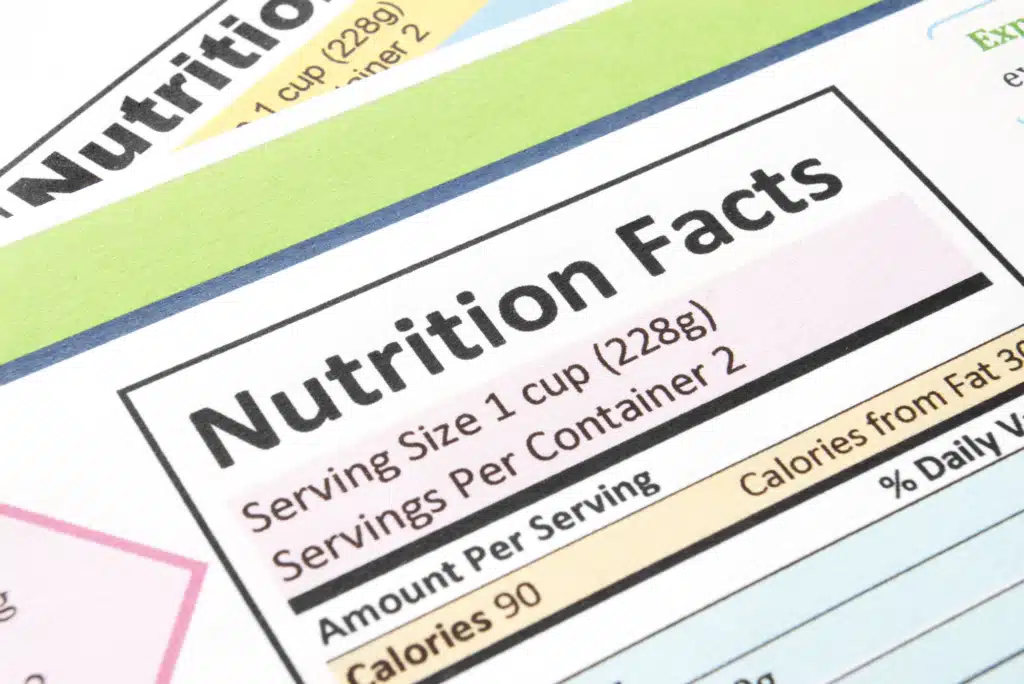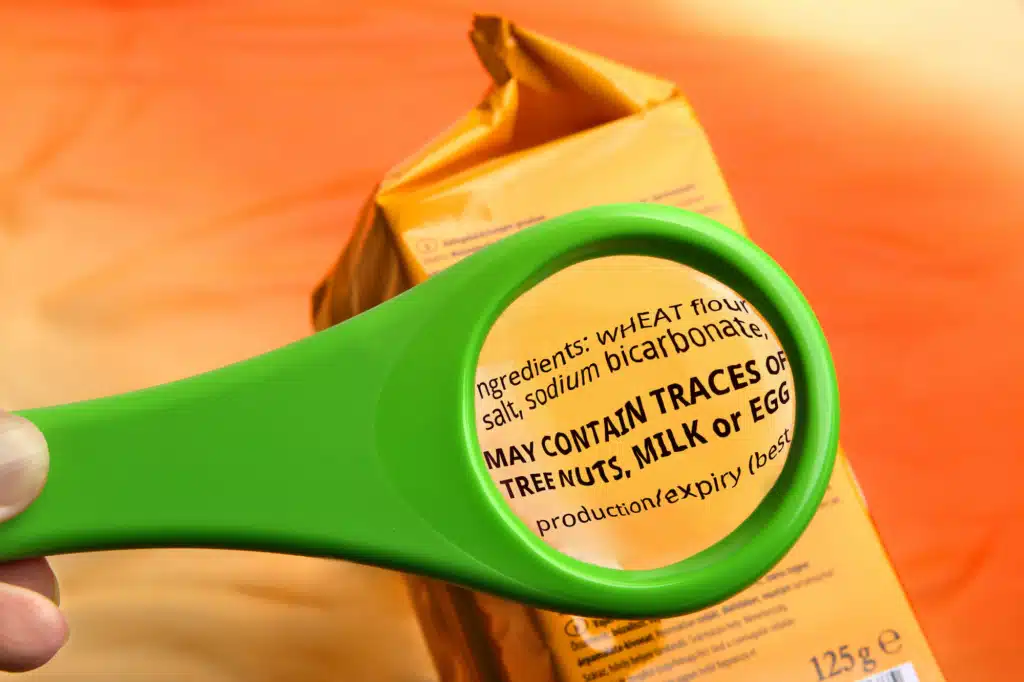 go back
go back
 go back
go back
Using labels to avoid allergy triggers
The FDA requires that most prepared foods; breads, cereals, canned and frozen foods, snacks, desserts, drinks, etc. be labeled with Nutrition Facts. The goal is to help you make informed choices that will help you maintain or improve your health. When you have food allergies, food label information is not only related to your overall health but can have life altering consequences.
Unfortunately, food allergies cannot be cured. Currently, the best strategy is to identify and avoid the allergens that trigger your symptoms. The FDAs food labeling regulations are more specific for foods and substances that cause allergies.
“The law requires that food labels identify the food source of all major food allergens used to make the food. This requirement is met if the common or usual name of an ingredient already identifies that allergen’s food source name (for example, buttermilk). The law also requires that the type of tree nut (for example, almonds, pecans, walnuts), and the species of fish (for example, bass, flounder, cod) and Crustacean shellfish (for example, crab, lobster, shrimp) to be declared.”
FDA

Food Labels Identify Eight Major Food Allergens
The Food Allergen Labeling and Consumer Protection Act of 2004 identified eight major food allergens. When this act was passed, these allergens accounted for 90 percent of food allergies and serious allergic reactions in the U.S. Following is a list of these allergens:
- Milk – the FDA interprets this as cow’s milk, but proteins found in other milk from animals – goats, sheep, deer and buffalo have similar proteins.
- Eggs – the FDA interprets this as eggs from chickens
- Fish
- Crustacean shellfish
- Tree Nuts
- Peanuts
- Wheat
- Soybeans
Where can I find information on ingredients that are allergens?
The name of the food source of a major food allergen must appear in one of two ways: in parenthesis following the name of the ingredient. For example, whey would be listed as “whey (milk).” The ingredient can also be listed immediately following or next to the list of ingredients using a “contains” statement. For example “contains milk.”

What’s the difference between “Contains” and “May Contain”?
- Contains – the food source names of all major allergens used must be included as ingredients. For example, Contains milk, peanuts.
- May Contain – this can also be written “produced in a facility.” This label is used if there is a chance the food allergen may be present. For example, plain M&Ms are produced in the same facility as Peanut M&Ms and the label for Plain M&Ms says “may contain peanuts.” May Contain is a voluntary label and not all manufacturers use it.
How do they label food made in a store vs prepackaged?
Food labeling requirements do extend to businesses that package, label and offer food for consumption. However, the requirements do not apply to food packaged at the point of sale, for example when ordering a sandwich that is made on the spot.
Check the Label Every Time
Recipes change. Your favorite food may look the same and taste the same, but the ingredients can change and it’s a good idea to always check the label for allergens.

Medically Reviewed By: Sumana Reddy, MD
Reviewed on: Nov. 19, 2022
Our team of writers, editors, and medical experts goes over each article carefully to make sure the information is correct and that only reliable sources are used.
We regularly check to see if the info in this article matches up with the latest scientific research and expert advice so that we can give you the most up-to-date information. See list of trusted resources here.
Understand Your Reactions
Food allergies cannot be cured but there are solutions for treating reactions and strategies for managing exposure, at home, at work, at school and when eating out. Find an AllerVie Health specialist near you and make an appointment today.
Make an Appointment